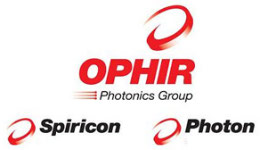Laser beam powers are typically measured using thermal sensors and photodiode-based sensors. Thermal sensors are used for high laser power measurements. The most-sensitive thermal sensors have a measurement range of tens of microwatts up to 100 KW and above.
Photodiode-based sensors are typically used for low laser power measurements, typically from pW up to several hundred mW. They are limited to the spectral range from the UV to the near IR, based on the specific semiconductor used.
Very Low Power Laser Beam Measurement
Measuring very low power laser beams down to nW, but with mid or far IR region wavelengths, poses a challenge. A photodiode type sensor may be required for low power measurement. However, limited spectral range is a concern with this type of sensor. Silicon functions at around 1100 nm, whereas germanium or InGaAs works out to about 1700 nm or 1800 nm. It is not a practical option to use specially designed photodiodes made of exotic materials.
The wavelength part of the problem can be addressed using thermal sensors with broadband absorbers. However, it is difficult to perform low power measurements down to nW even with the most sensitive sensor models. The 3A, the most sensitive thermal sensor from Ophir, is capable of measuring down to 10 µW, a remarkable performance for a thermal sensor. However, it cannot address the aforementioned problem. This leads to a gap as shown in Figure 1.
.jpg)
Figure 1. Ophir has introduced the RM9 radiometer system to bridge the gap shown in this image.
Ophir’s RM9 Radiometer System
The introduction of the RM9 radiometer system by Ophir can bridge this gap. The RM9 radiometer system is a sensor with very broad spectral regions, from the UV to the deep IR, allowing it to measure the power of very low level CW or quasi CW sources. It uses a pyroelectric detector that can provide the required spectral bandwidth. A chopper and a “lockin amplifier" are used to achieve the required high degree of sensitivity in order to measure the very low powers down to nW.
The chopper, working at a specific rate of 18 Hz, transforms the beam into a pulsed beam. The beam is then sensed by the pyroelectric detector using the lockin amplifier. Signals that are not pulsing at 18 Hz are not taken into account. This method maintains the noise level at a very minimum, thereby allowing the RM9 to perform laser power measurements down to 100 nW. The RM9 radiometer coupled to a Vega meter is shown in Figure 2.
.jpg)
Figure 2. The RM9 radiometer connected to a Vega meter.
The BNC cable from the chopper is coupled to the electronics module of the sensor, and the module, in turn, is connected to a suitable Ophir meter like the Vega meter. The measurement parameters can then be setup in the Vega meter, as done with any standard Ophir Smart Sensor. With this current model, power measurement in the range of 100 nW to 100 mW can be performed. The model is specified for the spectral range of 0.15-12 µm.

This information has been sourced, reviewed and adapted from materials provided by Ophir Photonics Group.
For more information on this source, please visit Ophir Photonics Group.